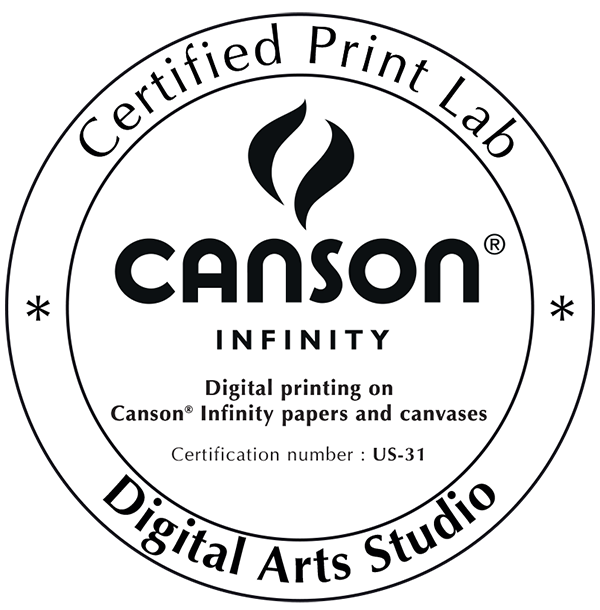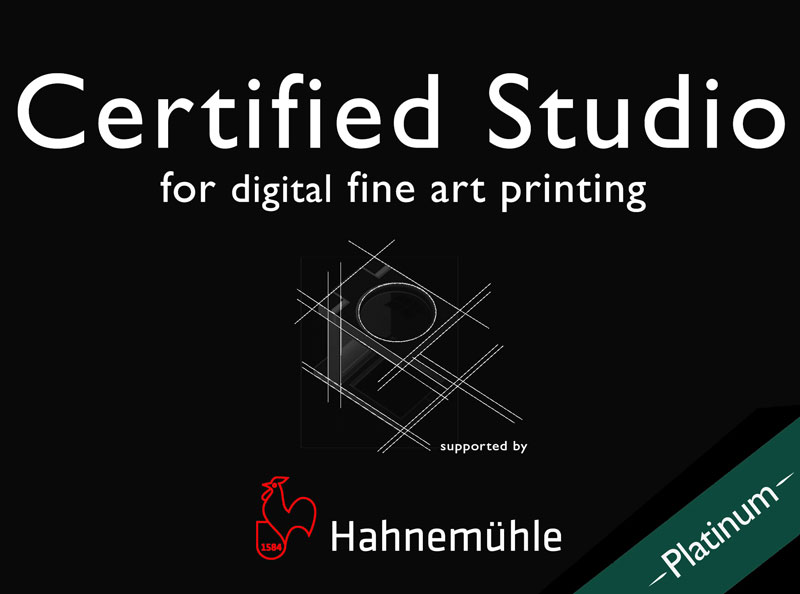Print On Demand & Copyright
(Reprinted with permission from Art Business News © 2014)
By Joshua Kaufman
Print-on-demand is a growing phenomena among retailers in the art and framing industry.
More custom frame- shops and some galleries are now offering to print work brought in by a customer or sent to them electronically. However, print-on-demand raises certain copyright issues that any retailer considering it should be aware of from the outset. But, before we delve in them we need a little background information on copyright as it is at the core of our business, yet a very misunderstood doctrine.
One acquires a copyright simply by the act of creating the artwork. Therefore, the moment the brush leaves the canvas, the fingers leave the clay, the shutter is snapped, the stylus leaves the tablet, or the saved button is clicked, a copyright vests in the creator. It is important to note that in each of the above examples the concept that the artist is trying to convey has been fixed in some tangible form, be it canvas, hard drive, clay, or negative.
One of the most frustrating aspects of copyright protection for an artist or publisher is that it does not protect the idea, just the expression of the idea once it is fixed in a tangible form. A week does not go by when I do not get a call from an incensed artist or publisher who is calling to complain and to seek action against somebody who “stole their idea.” They claimed to have been the first to come up with a new way of expressing a landscape, textural material, a still- life, or form of portraiture, and so on. Perhaps they were the original one who came up with the idea, but copyright does not protect that idea. So, another artist is able to take the underlying idea and create an original work of their own which embodies the idea of another, but not the first artist’s expression of that idea. So, the question becomes how close the second artist’s derivative expression of the same idea can be to the first original expression without infringing on the underlying copyrights.
The test for copyright infringement is a subjective one. Under copyright law, the test is “substantially similar.” Different courts have set up various tests to deter- mine whether one work is or is not substantially similar to the other; works do not need to be identical or nearly identical to be infringing. Courts have held, however, that paraphrasing—be it textual or visually—of the underlying work can be considered substantially similar. Transforming a work from one medium to another is infringing. If I create a painting and you create a sculpture of it, and all that happened is it has been transformed from one medium to another, that would not stop it from still being an infringement. Enlarging, reducing, and/or cropping would also be deemed to be infringements.
The creation of a derivative work would be considered an infringement. Forget all the old wives tales about X% or X number of colors changed, etc. By that we mean where you take an artwork and apply it to any type of licensed material from a print, postcard, screensaver, mouse pad, snow globe, check, puzzle, towel, or fabrics, those are all derivative works and even though the media has changed and there are inherent differences due to the underlying transformation to a different medium, those would all still be considered infringements.
To avoid an infringement claim, one must only use the original idea and not copy any of the underlying expression of the idea. Pasting and cutting parts of an underlying work can also be an infringement as well. So, if someone using Adobe Photoshop, or other techniques takes components of an artwork, rearranges them, from horizontal to vertical, or takes part of them and incorporates those parts in their otherwise original work, that can also be found to be infringing. It does not have to be simply copying the whole work; copying portions of a work can also lead to an infringement.
So, a framer who is working with print-on-demand and acquires a file from an artist or publisher to print needs to be extremely care- ful in any modification of the work. If a customer asks you to vary the colors, so they match their décor, or could you crop it in a certain manner because the customer wants to highlight just a specific part, those can all end up being infringing activities. As such, the print-on- demand framer should, unless they clear it up with the artist or publisher from whom they receive the file, stick to the file as provided to them. On the other hand, to be clear, publishers and artists who wish to maintain the integrity of the artworks should include in their print- on-demand agreements with their framers or other customers, restrictions on any modification to the underlying artworks.
How Long Does a Copyright Last?
Once an artwork is fixed in a tangible form and a copyright attaches, the duration of the copyright will normally be the life of the artist, plus 70 years. If a work is considered a Work for Hire, the duration is 95 years from publication (publication in copyright terms means offering copies to the general public) or 125 years from creation for an unpublished work.
A caveat on the reproduction of older works, as the durational limits I mentioned are for works created after January 1, 1978. Generally speaking, U.S.-created works which were published before 1923 will be in the public domain. For works created from 1923 to January 1, 1978, their status remains a giant question mark and an area fraught with potential problems. Prior to 1978, the duration of copyright was 28 years, plus a possibility of an additional 20 years or a total of 56 years. However, in order to obtain the first 28 years of protection, a work needed to be published with a copyright notice on it, and before the 28th year would have to be registered with the copyright office in order to get the second 28 years. Failure to do either of those would thrust the work into the public domain and anyone would be allowed to copy it.
Also, any U.S. work published without a copyright notice, until March 1, 1989, would enter the public domain. These restrictions only apply to U.S. works, not foreign works.
For works that were still protected by copyright either in the initial 28 years or registered and in their second 28-year term on January 1, 1978, when the current law went into effect were automatically extended for a minimum of 67 years. For unpublished works the term became life plus 70 or January 1, 1978.
So how do you know if a work was originally published with a copyright notice? How do you know if it was registered with the copyright office and so on? There is a one word answer to this dilemma: Research. You have to research the history of the artwork. Often one is not able to ascertain all the facts necessary, or even if they do determine the work is still protected by copyright, they cannot find the author. There is a term for that type of protected work: “Orphan Works.” You use those works at your own risk, because if the author does come out of the wood- work years later, you could be found to be liable of infringement.
Another area that framers can find themselves, once they start delving into the digital world, with exposure is when people come in with family photos and ask you to reproduce or to manipulate them, make a montage, clean them up, crop them, and so on. The photographer who took those family pictures, i.e., wedding pictures and such, own the copyrights in the work (unless they have entered the public domain as set out above).
Therefore, simply framing old wedding pictures or making a montages of existing photos would not cause the framer to be liable. How- ever, if they are asked to scan them or manipulate them in any way liability can attach. That is why most photo houses will not do that, or they require a letter in writing indemnifying them from liability signed by their customer.
It is also a question of who has the rights to grant print-on-demand printing rights. For publishers, it is important that you make sure that your underlying agreement with your artists provides for print-on-demand. Many older, standard contracts that are used in the industry do not provide for it. These are contracts that are tried and true, that publishers have used for years but have not augmented or updated to cover print-on-demand. To be prudent, one should make sure that prior to offering their images on a print-on-demand basis that they have that right covered with their artists. It would take a simple fix of a contract, but I would not recommend offer- ing print-on-demand rights to framers unless your Publisher-Artist contract clearly covers these rights.
Framers should, of course, inquire of the publishers to ensure that they do have print-on-demand rights be- fore they make prints because if they make prints and the publisher does not have rights, while the publisher may be liable, under copyright law so is the framer. That would be in addition to the publisher’s liability. Also, when we are talking about acquiring rights, it is important to understand who owns copy- rights. In most cases, it is going to be the individual artist. However, that is not always the case. There are circumstances where the artist has not assigned their copyrights or granted exclusive licenses to their publishers or third parties. In those instances, you need to make sure that the person granting print-on-demand rights is in fact, the appropriate person.
The term “Work for Hire” is often batted around and probably misused more than used correctly. However, for our purposes, there would be a Work for Hire if an employee, in the scope of his or her employment, created artwork. Thus, the employer would be considered the copyright owner. Therefore, if you are working with somebody who is an employee of a publisher or of some entity, then the entity or publisher will own the copyright, not the individual artist.
Also, if an artist is creating a work and they have their own corporation or LLC you need to make sure that the corporation or LLC has signed off on the paper- work and not the individual artist, and vice versa to make sure that the proper entity is granting the rights of the publisher and/or framer for print-on-demand.
Quality Issues
Another area which will add to a framer’s exposure which is unique for print-on- demand, is the quality of the prints. Assuming that the shop is obtaining a digital file from the publisher and is using their own printing equipment, they will be liable for the quality of the print. If the proper printing equipment and inks are not used and the works fade over time, or if you are start- ing to print on more exotic material as is not uncommon today, like Plexiglas, metal, and board, and the works do not last, i.e., they crack or get damaged in any other way, it will be the framer who is liable.
If a framer sells a work on the less expensive side and does not insist on having customers buy UV glass or acid-free matting, and then the works fade or discolor and you have not advised your customers as to the risk, the framer will be liable and will have no one to turn to. I always recommend to my framer clients that they, as part of their invoice, have a check box where they have offered acid-free mounting and UV protecting glass or Plexiglas and if the customer declines, they have customers initial the form, something like declining insurance on a car rental application. In that way, when the artwork fades or cracks as a result of being exposed to sun or the acid in the mats seeps into the print and discolors it, a framer has proof that they have informed the customer of the risk. Because you can be sure a couple of years down the road when the damaged or faded print is brought back to the frame- shop by an indignant customer, they will not remember that you had advised them of the potential damage if they frame on the cheap.
All in all where print-on- demand will end up in the industry, is really a market- driven decision. However, if you embark on it, make sure that you understand the rights and exposure which comes when you undertake this new revenue stream.
Joshua J. Kaufman, Esq. is a partner in the law firm of Venable, LLP, and Chair of their Copyright & Licensing Group. He is one of the country’s foremost attorneys in art, copyright, and licensing law. Mr. Kaufman has published more than 200 articles, co-authored several books, and is a regular lecturer on various topics in the Art Law and Licensing fields. Mr. Kaufman is also an adjunct law professor at American University Law School where he teaches Art Law, and is counsel to the Art Copyright Coalition. To reach Mr. Kaufman, e-mail him at: jjkaufman@venable .com or telephone him at (202) 344-8538.





